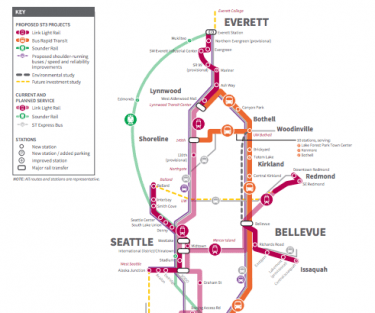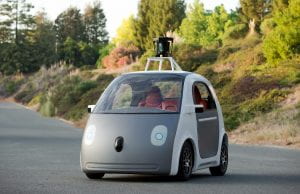January 19, 2017
The future of the first and last mile in Seattle

By Eric Barber
With the passing of Sound Transit 3 via Proposition 1, many alternate routes of transportation will be made available to Seattleites. In return, an adult in the region can expect to see about a $169 increase in taxes each year. This is in addition to a region wide $303 already approved in previous elections, based off of a median income of $77,000. This money will help to fund 12 new projects that range from Rapid Ride bus lines to new light rail lines. The hope is that more people will use these alternate forms of transportation and this will then reduce traffic in the King County area. Although these solutions can replace part of many people’s commutes, there will still be issues with their first and last miles of transit.

Recently, we saw the city’s commitment to trying to address this issue when it toyed with the idea of electrifying and bulking up its bike sharing system, a proposal it has since shelved. The city had hoped that by providing more stations and electric bicycles, it would be more attractive to commuters. However, because of inconsistent placement near transportation systems and variable weather conditions, this may not have been the best solution to bridging the gap of the first and last mile.
Metro on the other hand has proposed that King County building owners rent out their unused parking spaces to metro customers so that they can use them as part of their daily commute. This looks to solve the first and last mile issue of transit by using peoples cars to drive a short distance then park and use transit systems. However, once people are in their cars I think that it will be hard to convince them to go park in a random building, then walk to a transit stop, and wait for it to arrive.

Perhaps the most reasonable solution to this issue became apparent with Uber’s backing of Sound Transit 3. Using a ride-sourcing company to get picked up and dropped off at a transit location would be the most ideal, in terms of user simplicity. Current costs and wait times of these ride-sourcing services make them less competitive. However, by the time the Sound Transit Projects are completed, it will be more likely that companies like Uber are operating with driverless vehicles, which means decreased costs for the customers. These driverless vehicles would help decrease the costs of using a ride-sourcing company to complete your first and last miles. With the convenience of being picked up at home and dropped off directly at transit locations, mixed with reduced costs due to decreased operating costs, I think it is very likely that more people change their commuting patterns. Perhaps, for those wanting a further reduced price, mini buses like those being tested in Helsinki could be used to pick up multiple passengers at home in a single neighborhood and then drop them off at a transit location. This would even further reduce cost, although it would increase transit time.
One major argument to Sound Transit 3 is that by the time it would be completed, it will have been outcompeted by ride-sourcing companies and thus the money will have been wasted. Although this argument is compelling, researchers speculate that the widespread use of automated vehicles could increase traffic congestion. This would be expected due to the reduced costs, causing more people to take personal vehicles rather than public transportation. Additionally, the elderly would also be able to drive for extended amounts of their life, further increasing the amount of vehicles on the road. Moreover, because light rail is mostly unaffected by traffic, it will still be much faster than commuting by car, and thus still attractive. Although it is uncertain what commutes will look like in the next 20 to 30 years, it is clear that we are still going to rely on many different forms of transportation.
Recent Comments